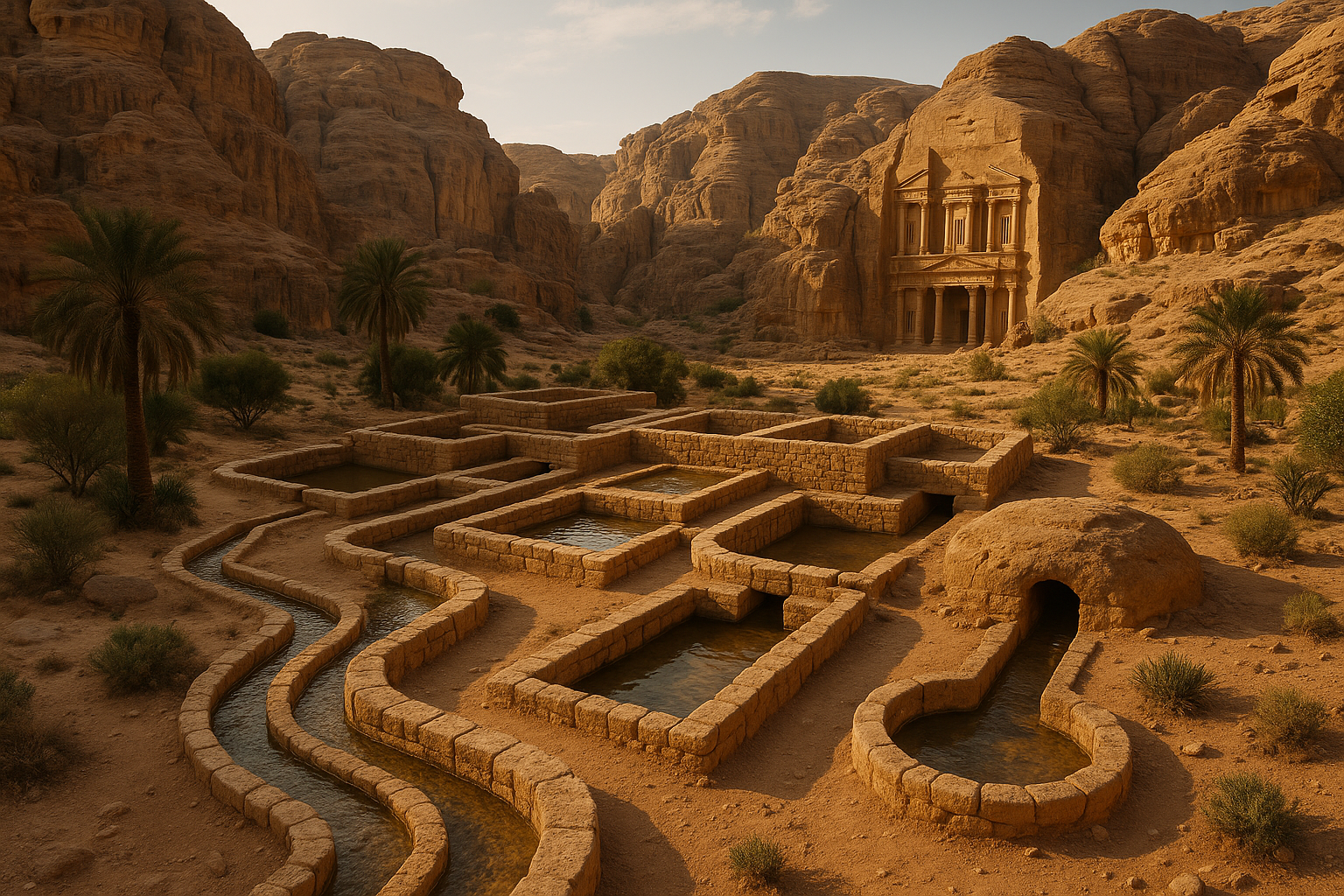Imagine a civilization thriving in one of the most arid regions of the world, where water scarcity is a daily reality and yet, astonishingly, the society not only survives but flourishes. This is the story of the Nabataeans, an ancient people whose innovative hydraulic engineering transformed the harsh deserts of the Middle East into a sustainable oasis. 🌵
The Nabataeans, renowned for their impressive city of Petra, were true masters of water management. Their ability to harness and control the sparse water resources available to them is a testament to their ingenuity and a fascinating subject for modern study. In this article, we delve into the ingenious hydraulic inventions of the Nabataeans, exploring how their mastery of aquatic balance laid the foundation for sustainable innovation in one of the most challenging environments on Earth.
Water management is a critical issue even in today’s world, with climate change and population growth putting increasing pressure on our water resources. By studying the Nabataeans’ techniques, we can glean valuable insights into sustainable practices that could inform our current approaches to water conservation and management.
But who were the Nabataeans, and how did they achieve such remarkable feats? This article will guide you through their history, revealing the secrets behind their advanced hydraulic systems. We’ll explore their sophisticated network of channels, dams, and cisterns, which were ingeniously designed to capture, store, and distribute water with precision and efficiency.
The Nabataean Legacy: A Civilization Ahead of Its Time
The Nabataeans were a nomadic Arab tribe that emerged in the 4th century BCE. Over time, they established a powerful kingdom, with Petra as their capital. Located in present-day Jordan, Petra was strategically positioned at the crossroads of major trade routes, allowing the Nabataeans to prosper economically.
Yet, their success was not solely due to trade. The Nabataeans’ advanced understanding of hydraulic engineering played a pivotal role in their ability to support a large urban population in a desert environment. Their methods were not only practical but also sustainable, demonstrating a deep respect for the natural balance of their surroundings.
Ingenious Hydraulic Inventions: Capturing and Storing Water
At the heart of the Nabataeans’ water management system was their ability to capture rainwater and channel it to where it was needed most. They constructed an extensive network of channels and aqueducts, some of which stretched for miles, to transport water from distant sources. These channels were meticulously engineered to minimize evaporation and maximize efficiency.
The Nabataeans also excelled in the art of water storage. They built numerous cisterns and reservoirs, cleverly utilizing the natural topography to collect and retain water. These structures were often carved directly into the rock, providing both durability and security.
Dams were another critical component of the Nabataean hydraulic system. By constructing strategically placed dams, they could control the flow of water, ensuring a steady supply even during the dry season. This ability to regulate water flow was crucial for agriculture, as it allowed the Nabataeans to cultivate crops and sustain their population.
Sustainable Innovation: Lessons for the Modern World
The Nabataeans’ mastery of water management offers valuable lessons for today’s world. Their approach to hydraulic engineering was inherently sustainable, emphasizing the importance of working with, rather than against, the natural environment. 🌿
By studying their techniques, modern engineers and environmentalists can gain inspiration for developing sustainable water management practices. The Nabataeans demonstrate that it is possible to achieve a harmonious balance between human needs and the limitations of the environment—a lesson that is more relevant today than ever before.
As we explore the Nabataeans’ hydraulic inventions in greater detail, we’ll uncover the secrets of their success and consider how their innovations might be adapted to address contemporary challenges. From climate change to water scarcity, the Nabataeans’ legacy offers a beacon of hope and a roadmap for sustainable innovation in the face of adversity.
Join us on this journey through time as we unveil the fascinating world of Nabataean engineering—a world where creativity and necessity converged to create a masterpiece of sustainable ingenuity. 🚀

Conclusion
As we conclude our exploration of Nabataean hydraulic marvels, it’s clear that the ingenuity of this ancient civilization extended far beyond their monumental architecture. Through sophisticated systems of cisterns, aqueducts, and rock-carved channels, the Nabataeans mastered the art of water management in one of the harshest desert environments on Earth.
The true brilliance of their engineering lies in sustainability and foresight. 🌿💡 By harmonizing technology with nature, they captured rainfall, minimized evaporation, and ensured a steady water supply for agriculture and daily life. Ultimately, the hydraulic innovations of the Nabataeans are more than archaeological achievements — they are enduring lessons in resilience, adaptation, and the intelligent stewardship of precious natural resources.



